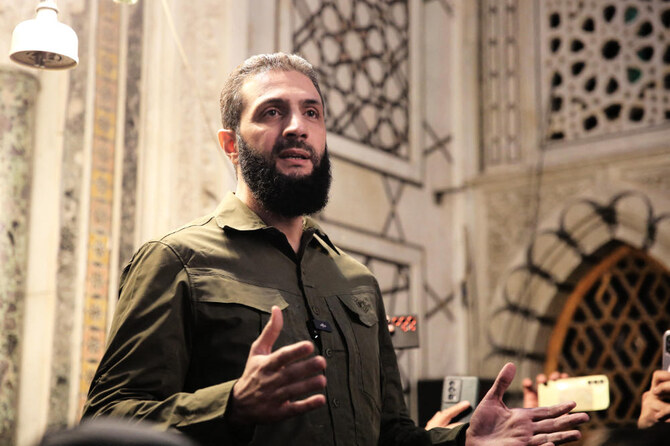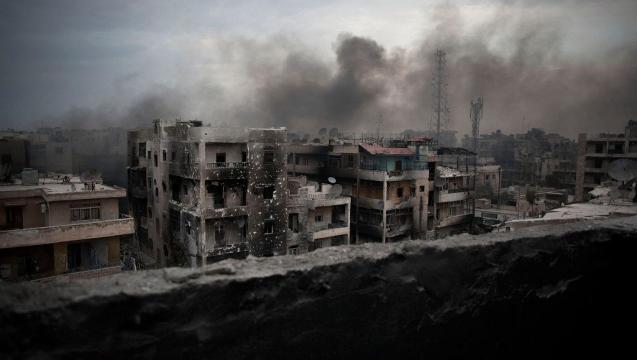This fractured landscape of Syria represents the new reality of a once-unified state transformed into a geopolitical laboratory where regional ambitions and global rivalries continue to unfold at tremendous human cost.
Political Upheaval Reshapes Syrian Landscape
Recent developments in Syria have dramatically altered the country’s political and military landscape. In a stunning turn of events, opposition forces led by Hay’at Tahrir al-Sham (HTS) launched a surprise offensive against the Assad regime in November 2024, rapidly capturing major cities including Aleppo, Hama, Homs, and even Damascus. By December 2024, President Bashar al-Assad had fled to Moscow, ending his family’s decades-long rule as reported in media.
HTS leader Ahmed al-Sharaa has established a transitional government, but the power vacuum has sparked internal conflicts between HTS forces and former regime loyalists. According to the Syrian Observatory for Human Rights, these clashes have resulted in over 1,000 civilian deaths in just the past three months. The United Nations estimates that 80% of Syrians now live below the poverty line, with humanitarian aid reaching only 60% of those in need.
In the latest occurrence, gunmen loyal to deposed Syrian leader Bashar al-Assad killed at least 15 security personnel in ambushes in the coastal province of Latakia on Thursday. These attacks near the town of Jableh occurred in the Alawite heartland, signaling continued resistance from Assad’s traditional power base.
Regional Powers Stake Their Claims
Israel has announced plans to “prepare to defend” Jaramana, a predominantly Druze city near Damascus currently under attack by Syrian regime forces. This marks one of Israel’s most direct statements regarding intervention in Syria since the conflict began in 2011.
The Druze community in Syria’s southwest has maintained remarkable cohesion through strategic neutrality, with their position near the Israeli-controlled Golan Heights giving them outsized significance in regional security considerations. Israeli defense forces have reportedly increased their presence along the border by 30% in the last month alone.
Kurdish Autonomy Under Threat
In northeastern Syria, Kurdish forces who led the fight against ISIS find themselves increasingly vulnerable as the U.S. continues to scale back its presence. According to Pentagon figures, American troop numbers have decreased from 2,500 to approximately 900 since late 2023.
Turkey views Kurdish autonomy as an existential threat and has conducted multiple military operations to establish a “security zone” along its border. The latest Turkish incursion in February 2025 has displaced an additional 75,000 civilians, according to the International Rescue Committee.
“The Kurds’ battlefield success against ISIS earned international acclaim but created strategic vulnerability,” explains former U.S. Ambassador Robert Ford. “Their future hinges on delicate diplomacy between Damascus, Moscow, and Ankara.”

The Golani Factor: Extremism in Idlib
In Syria’s northwestern Idlib province, Hayat Tahrir al-Sham (HTS)—formerly known as Jabhat al-Nusra and led by Abu Muhammad al-Golani—maintains control over the last major opposition stronghold. Once affiliated with Al-Qaeda, Golani has attempted to rebrand HTS as a more moderate force focused on local governance rather than global jihad.
Recent surveys indicate that HTS now administers territory containing approximately 3.5 million civilians, with an estimated fighting force of 15,000-20,000 militants. Turkish observation posts throughout the province maintain an uneasy balance of power, while periodic offensives by Syrian government forces and Russian airpower continue to threaten civilian populations.
Global Theater of Conflict
Syria has become the stage where global powers test military capabilities and redefine spheres of influence. Russia’s interest in the Syrian war is shaped by a mix of strategic, military, and geopolitical factors. First, Syria is a long-standing ally, and by supporting Bashar al-Assad, Russia seeks to maintain and expand its influence in the Middle East, countering Western, especially U.S., dominance in the region. The presence of vital Russian military bases in Syria, including a naval facility in Tartus and an airbase in Hmeimim, provides Russia with a strategic foothold in the Mediterranean, allowing for greater power projection.
Russia also views its intervention as a way to combat terrorism, particularly Islamic extremist groups like ISIS and al-Qaeda, which pose a threat to both Russia’s regional interests and domestic security. Furthermore, Russia aims to secure lucrative economic opportunities, such as arms sales and post-war reconstruction contracts. By backing Assad, Russia positions itself as a key player in the Middle East, asserting its global influence and challenging U.S. and NATO interests in the region.
The United States maintains a small but strategic presence in Syria’s oil-rich eastern provinces—with troops guarding facilities that produce an estimated 80,000 barrels per day, according to energy sector reports.
Iran views Syria as the crucial western link in its “Axis of Resistance,” providing a land corridor to Hezbollah in Lebanon. Intelligence sources indicate Iran has invested over $30 billion in military infrastructure and proxy militias throughout the conflict.
A Fractured Future
As the conflict enters its 15th year, Syria remains physically and politically fragmented into distinct influence zones: government-controlled areas backed by Russia and Iran (approximately 65% of territory), Turkish-controlled northern territories (10%), Kurdish autonomous regions (20%), and remaining opposition enclaves (5%).
The war has claimed over 610,000 lives according to the latest UN estimates, and displaced 13.2 million people—more than half the country’s pre-war population—making it the largest displacement crisis of the 21st century.
While major combat operations have diminished in intensity, true peace remains elusive. International reconstruction pledges total only $15 billion of the estimated $400 billion needed, with most Western nations refusing to commit significant funds without political transition away from the Assad-aligned power structures.
This fractured landscape represents the new reality of a once-unified state transformed into a geopolitical laboratory where regional ambitions and global rivalries continue to unfold at tremendous human cost.





1 Comment
It’s really sad to see how Syria’s just turned into a playground for bigger powers—every side’s pushing their own agenda, but it’s the ordinary people who keep losing the most.